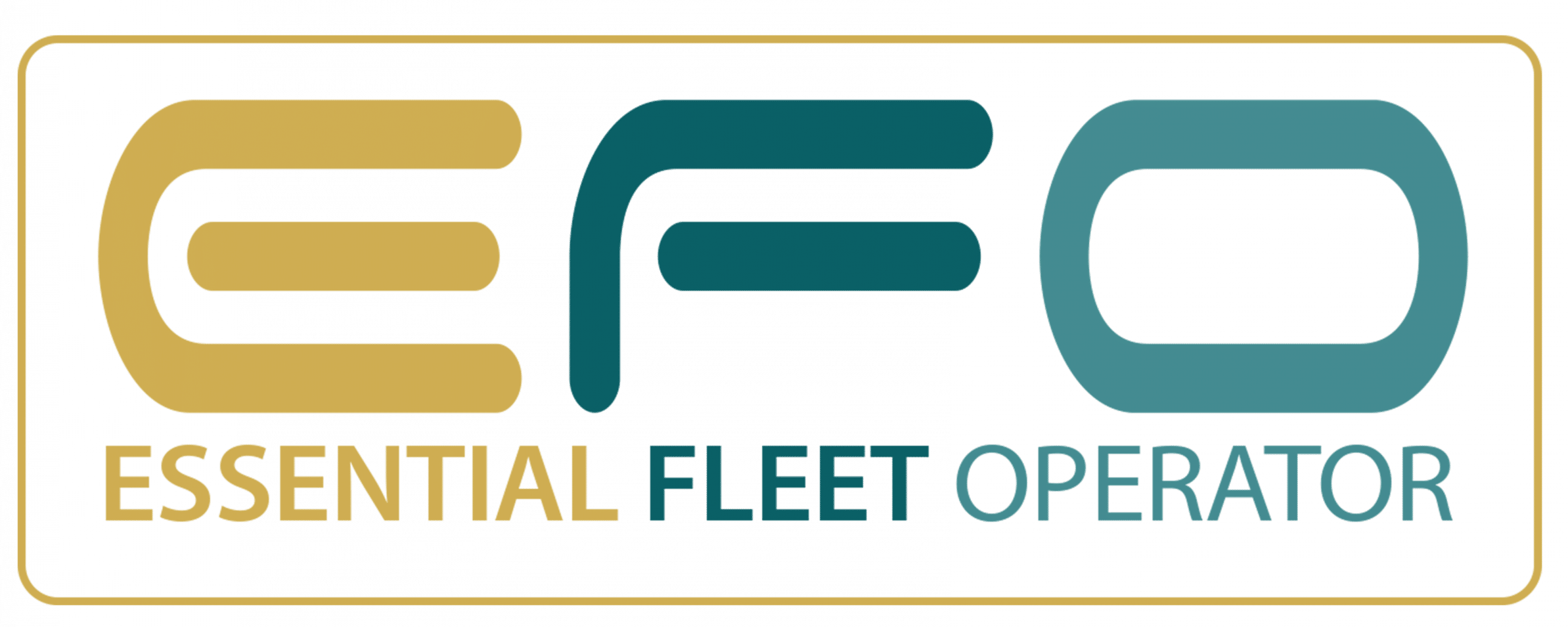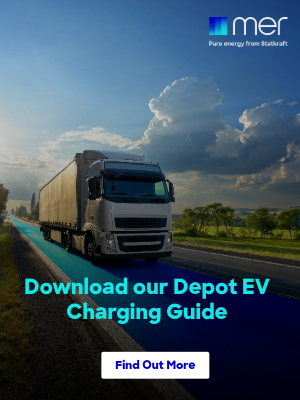Introduction
Established more than nine years ago, Mer is now at the forefront of delivering state-of-the-art EV charging solutions across Europe. In the UK, as well as being a vital part of the development of the public charging network, Mer is leading the way in assisting businesses and public sector organisations make the switch to Electric Vehicles (EVs) and makes a huge contribution to the sustainability of operations into the future.
This is achieved by an approach that, first of all, collaborates with fleets to ensure that infrastructure is designed and tailored to specific requirements and follows with the installation of systems that utilise the latest technology that will meet the needs of now and the future.
Essential Fleet Group was delighted to speak with Natasha Fry, Head of Sales at Mer in the UK, about how the company has reached a market-leading position and how customers will benefit in the years to come as technology continues to develop.
Interview
Q: How does the expertise of Mer prepare organisations in a variety of environments and with diverse operational needs and experience, to embrace all considerations necessary before starting the electrification journey and what are the most common challenges fleet operators face at this stage?

While the actual process of fleet electrification can vary wildly depending on the needs of the organisation, there are two key challenges that fleet operators must face.
Firstly, and most importantly, are the questions surrounding power. Does the depot site in question have sufficient grid connections to serve the EV fleet? A lot of the time, there will be an adequate supply of energy; however, in cases where there is not, careful planning must occur to ensure that the site can be upgraded to meet the demand with minimal disruption. Mer has a wealth of experience in ensuring that the power needs of depots can be met and through our partnerships with DNOs and IDNOs to help speed up the process.
Secondly, there is the question of budgets. How much is this project going to cost? Due to Mer’s experience, we have become very good at providing accurate cost estimates for fleet electrification projects. Accuracy is extremely important to help ensure the right level of investment and secure stakeholder buy-in.
Q: Once the vital preliminary fleet and estate appraisal is complete, how do Mer’s tailored packages ensure the best solutions for fleets? Can you give a few examples of customers you have worked with?
We take a design and consultancy approach; there is no one-size-fits-all package. I like to engage with as many key stakeholders as possible to ensure everyone is on the same page and they know exactly where their budgets are going. Then for me and the team, actually walking around the site is one of the most important methods to truly understand how the site operates day to day. I always say you can’t know a site until you’ve been there!
For instance, in our work with Ikea, we took the time to understand how vehicles operated at each of their stores and at their Dartford and Dublin distribution centres. This was increasingly complex as we also had to consider not just Ikea’s own vehicles, but those of their logistics partners as well. This led to a robust network of 200 chargers being installed across the UK to facilitate the massive charging demands of the company.
Q: Many fleets operating within the Essential Services Sector provide vital services and need to respond to emergencies and critical incidents. How does Mer’s comprehensive managed service model help with this?
For the Essential Services Sector the most important factor to them is maintaining up-time. Emergency vehicles need to be able to respond at the drop of a hat. This is where we offer tailored packages for aftercare and maintenance for essential services. We must make sure each individual location is designed to mitigate risk as much as possible in the initial design phase of the project. Once the installation and handover has taken place, our aftercare team steps in to ensure that any issues are rectified quickly
However, it’s important to stress that no two operations are the same, particularly in fleet environments, where usage patterns, site design, climatic conditions, and operational criticality all vary significantly. Our approach is not one-size-fits-all. Instead, we work with our customers to understand:
• The operational environment (indoor/outdoor, usage intensity, public or depot-based)
• Design and layout constraints
• Fleet usage patterns and dwell times
• Risk tolerance and business continuity requirements
Only by getting under the skin of the operation through discovery workshops, site audits, and real usage data can we define the most effective planned maintenance regime. This may include routine physical inspections, remote diagnostics, consumables management, firmware updates, and proactive component replacements, all tailored to the specific context of the fleet and site.
Mer’s goal is to mitigate risk, maximise uptime, and ensure long-term charger reliability backed by clear SLAs and performance reporting.
Q: Is Mer able to coordinate financial models with grants available from local and central government?
Yes, Mer has experience in supporting fleets with the OZEV grant schemes and can offer consultancy with local government schemes. Meanwhile, we have a variety of different financial models such as CAPEX examinations, infrastructure as a service, and charging as a service. Furthermore, we can provide guidance on business cases such as understanding the total cost of ownership and return on investment projections for diesel vs. EVs.
Q: How do you train or support drivers and depot managers in adapting to the new charging infrastructure?
In my experience, I’ve often found the drivers themselves to be the biggest advocates for the project if everything goes well. To ensure this, we provide tailored on-boarding sessions and support. It’s important for depot teams to feel empowered and not overwhelmed. Training is often one of the biggest factors in smooth operational implementation and change management.
Q: Is Mer taking steps towards a situation where charging solutions integrate with existing fleet management systems or platforms?
Yes, we are taking steps to integrate charging data with major fleet data platforms surrounding telematics and route planning, through API-driven access. This helps to create real-time visibility on data such as charging status, energy usage, and CO2 savings. This enables stakeholders to understand the impact of the chargers and maximise efficiency. This also helps to indicate vehicle readiness for future electrification projects.
Q: What kind of SLA (Service Level Agreement) commitments can fleet operators expect from Mer?
We offer custom SLAs depending on your fleet’s criticality, response time, fix time and percentage up-time. With support available across the UK, backed by platform alerts and proactive maintenance, we aim to ensure a minimal impact on your day-to-day operations. It is why we selected The AA as our frontline responders, due to their unmatched coverage, especially outside of normal working hours.
Q: How does Mer provide energy management solutions that help fleet operators monitor usage, optimise schedules and control costs?
We take the time to produce an in-depth analysis of the energy demands of your depot while considering your daily operations. This is to see if we should implement smart charging solutions such as load balancing. Charging schedules can be drawn up to allow you to take advantage of times outside of peak energy tariffs. We are all too aware of the need to reduce the strain on the grids and the extra costs of charging during peak hours.
Q: How do Mer’s renewable-powered charging solutions benefit organisations and assist with future regulations and low-emission zones?
All our public chargers are powered by renewables; however, understanding the nuances of power supply for depots means that, unfortunately, not every location is ready for renewable power. However, as part of our design and consultancy services, we future-proof the selection so that further down the line you can easily make the switch to renewables. To help with ensuring compliance with both internal and external sustainability policies we are transparent with reporting for Scope 1 and 2 emissions along with anything else that the client might need to know.
Q: How does Mer manage and choose manufacturer partners to prepare for vehicle-to-grid (V2G) capabilities, bi-directional charging and other features of ISO 15118?
Due diligence is at the top of our minds when choosing manufacturers for our hardware. We only ever select providers through extensive tenders. In one of our most recent hardware tenders, we went through an exhaustive selection process with almost 50 suppliers participating to find the right one. In terms of ISO 15118, manufacturers cannot participate in our tenders without being compliant with the ISO’s features.
Q: What is your outlook on how depot, public, and home charging will integrate for mixed-use fleets in the next 5 years?
I know everyone goes on about data being the future, but it really is true! The hardware is already capable; the question is how well the software can integrate with the back-office services. The other shift I am noticing is ensuring that drivers can have the flexibility to charge away from the depot. For instance, allowing drivers to charge at home or on the road. This is why Mer has opened its extensive public charger network to fleets so that they can easily track costs and charges.
Q: What are the innovations in charging speed, energy storage, or solar integration that Mer is working on for fleet customers?
We are currently focused on looking at solar and battery storage. Our work with Metrocentre in Gateshead involved the use of 15 solar canopy chargers, which were then also integrated into the pre-existing solar photovoltaic (PV) rooftop installation. The overall solar solution is the largest ever installed at a UK shopping centre, and sequesters the same amount of carbon in a year as 10,000 trees.
Q: As the transition of fleets to EVs has accelerated, there is now a wide choice of charging infrastructure providers. To what would you attribute Mer’s success and how will you maintain your competitive edge in the future?
We have spent the past nine years delivering real-world, multi-site charging infrastructure projects across the UK, giving us a practical understanding of the operational, technical, and logistical complexities that large fleets face. Our success is rooted in the strength and consistency of our team, many of whom have been with the business throughout this journey, ensuring continuity, shared learning, and a reliable partner for our customers.
Combined with the financial stability and sustainability credentials of our parent company, Statkraft, Mer offers a proven, people-led approach to EV fleet charging that few can match.
To learn more about Mer, visit: https://uk.mer.eco/ev-fleet-charging/ev-depot-charging/
The above article was published in Issue 5(2025) of Essential Fleet Manager Magazine.




